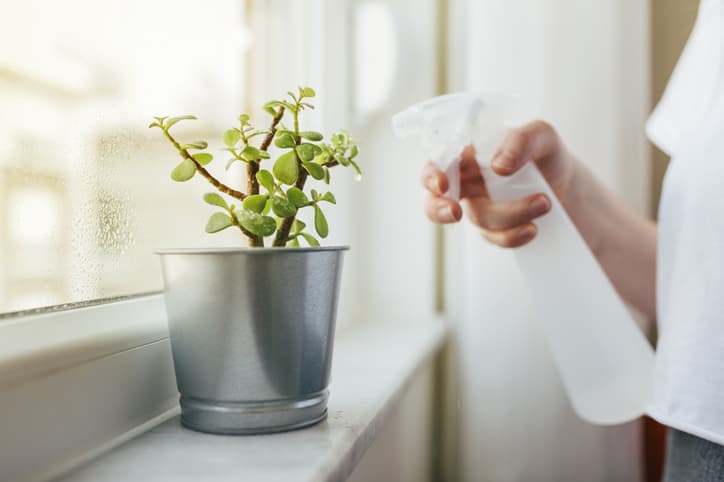
Plants are a vital part of our natural environment. Many have medicinal value, offering relief from various health problems, including swelling, depression, fevers, and digestive issues. Keeping plants also offers visual stimulation and other health benefits. Houseplants can combat stress, eliminate unpleasant odors, and improve your attention span.
With all these benefits, it isn’t surprising that over 33 million U.S. households engaged in indoor gardening in 2019. Of course, you need to care for your plants effectively to maximize their benefits. Caring for plants includes weeding, ensuring plants get enough sunlight, and, of course, watering plants. You can use several types of water to water your plants, but some types are better than others. Using reverse osmosis water for plants is a fantastic way to promote plant health so you can enjoy healthy plants in your indoor and outdoor spaces.
What is reverse osmosis water?
Reverse osmosis water is purified using a reverse osmosis purification system. Water contains natural substances, such as minerals, that can cause health problems. Water also contains other harmful substances, such as chlorine, lead, and bacteria. Running water through a reverse osmosis purification system removes contaminants from the water.
Is reverse osmosis water good for plants?
Using reverse osmosis water for plants is a great way to maintain plant health because you avoid giving your plants contaminants when watering. Salt is one of the natural substances that reverse osmosis filtering eliminates. When there’s too much salt in the soil, it can repel water from the plant’s roots. When this happens, the plant will suffer from dehydration. It will fail to thrive and may even die from a lack of water consumption.
Reverse osmosis also removes arsenic and lead from water. Removing arsenic is crucial, mainly if you’re growing edible or medicinal plants, because ingesting arsenic can cause cancer. Lead negatively impacts plant growth and can prevent seed germination.
In addition to keeping plants healthy, using reverse osmosis water for plants is beneficial because it saves you money. Contaminants can cause health issues that take time and money to treat. In some cases, contaminated water can kill plants, causing you to spend money replacing your plants.
How does reverse osmosis water compare to different types of water?
There are multiple types of water available to use for your plants. In addition to reverse osmosis water, you could use rainwater, tap water, well water, or distilled water.
Is reverse osmosis water better than rainwater for plants?

Rainwater offers some benefits. First, it’s cost-effective to capture rainwater if you live where it regularly rains. Rainwater also helps cleanse plant leaves and provides nitrates, which are great for plants.
Using rainwater for plants has some disadvantages, however. Rainwater can be contaminated through exposure to sunlight, insects, and animals. Preventing exposure can be challenging, and you may not realize your water’s contaminated. Contaminated rainwater can pass on harmful bacteria, chemicals, and minerals.
Ultimately, reverse osmosis water delivers peace of mind because you can be confident in the water’s quality. You don’t have to worry about monitoring for potential contamination, and you won’t have to spend money treating an ill plant or replacing a plant that dies.
Reverse Osmosis Water vs. Tap and Well Water
For many people, tap water comes from their town’s water supply. This water is treated, but that’s where some issues with tap water arise. The chlorine in tap water is toxic for plants, and even small amounts of chlorine can damage or kill plants.
Well water supplies drinking water to rural properties without a town water supply. Although nitrates are suitable for plants, excessive amounts can prevent plants from growing. Well water can also pass on contaminants, such as salt or chlorine.
Reverse osmosis systems can purify your home’s drinking water or all the water you use. Either way, your drinking water supply won’t pass on harmful substances, enabling you to keep yourself and your plants healthy.
Reverse Osmosis vs Distilled Water for Plants
Distillation is another method for removing toxins from water. With reverse osmosis, the water passes through membranes that catch the contaminates and prevent them from passing through with the water. With distillation, the water is boiled. Boiling removes the contaminants. The steam created when the water is boiled is recaptured and converted back to its liquid state, producing distilled water. While distilled water is safe drinking water, it can absorb and pass on minerals, so you must store it in glass jugs.
Both reverse osmosis and distilled water go through a process that strips out the contaminants. However, reverse osmosis water goes through an extra step. Healthy minerals are added back to the water after the filtration is complete. These minerals aren’t added back to distilled water. Therefore, using reverse osmosis water for plants is the best way to give your plants contaminate-free water with essential nutrients.
What is an RO system?
Reverse osmosis systems are purification systems installed in buildings. RO systems are energy-efficient filtration systems that remove debris, odors, contaminants, and undesirable tastes from water. Filtration speeds and system costs vary depending on the type of system chosen. RO systems specialists can install an RO system under the sink to treat tap water in one location or install a whole home system. Reverse osmosis system specialists will explain your options and help you select the best system for your needs.
Sources
DerSarkissian, C. (2021). Health Benefits of Houseplants.
Health Encyclopedia: A Guide to Common Medicinal Herbs. (2022).
Indoor houseplant gardening participation in the United States from 2010 to 2019. (2022).
Tags: las vegas, Reverse Osmosis Systems, Types of Water Filtration Systems